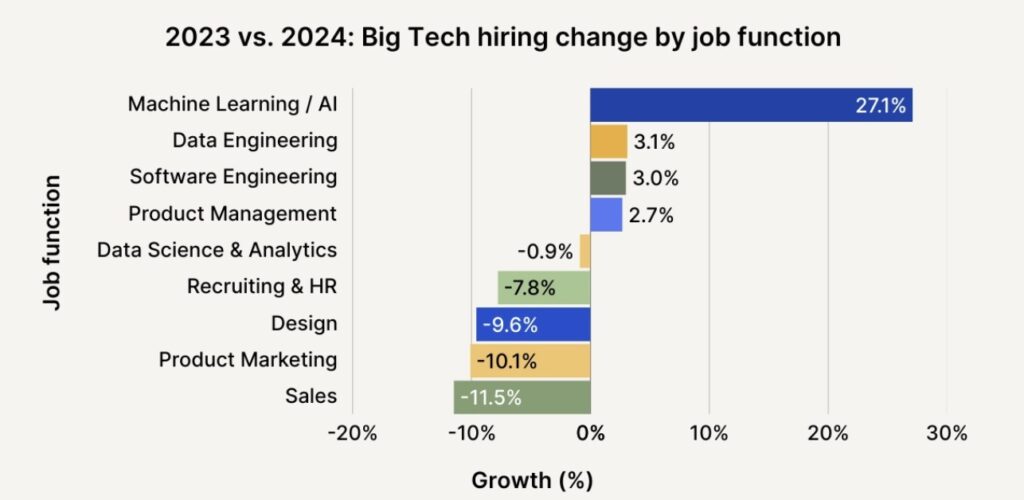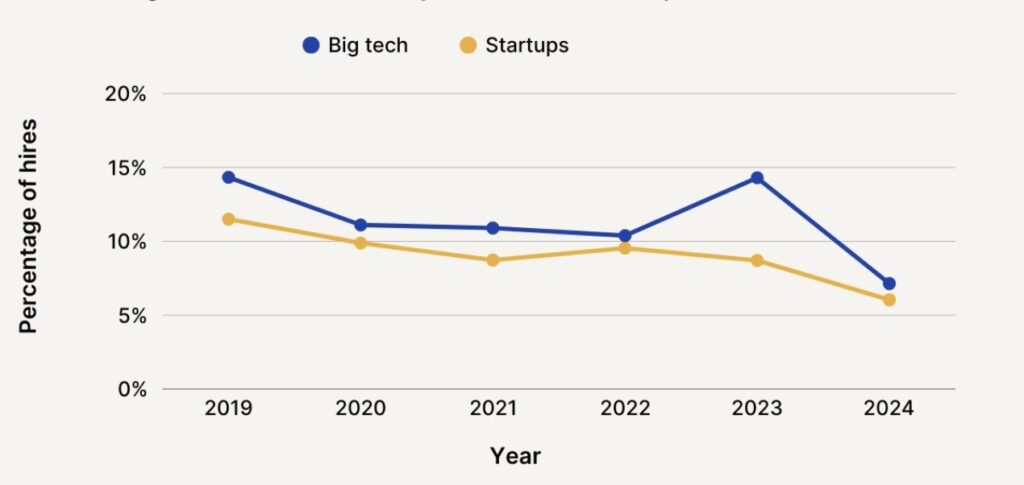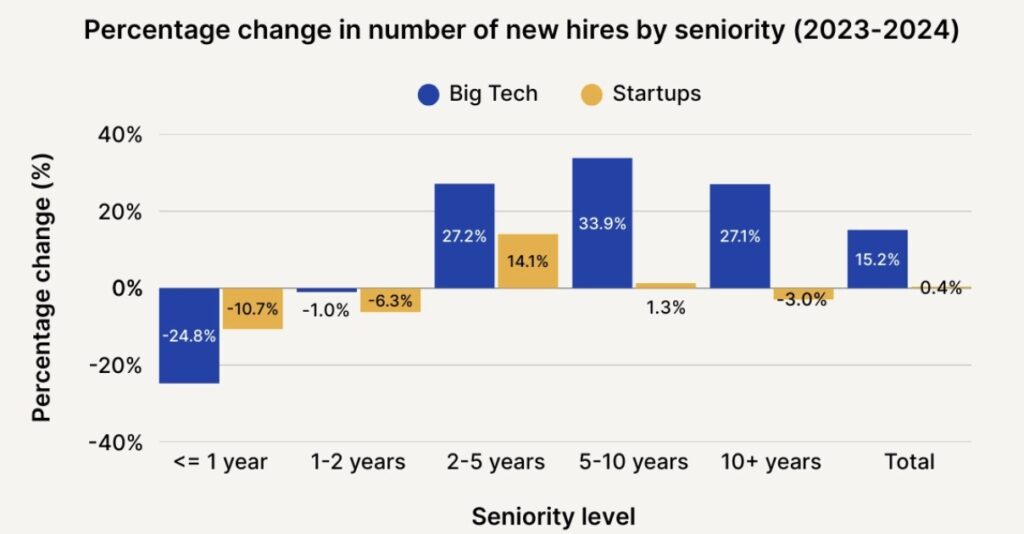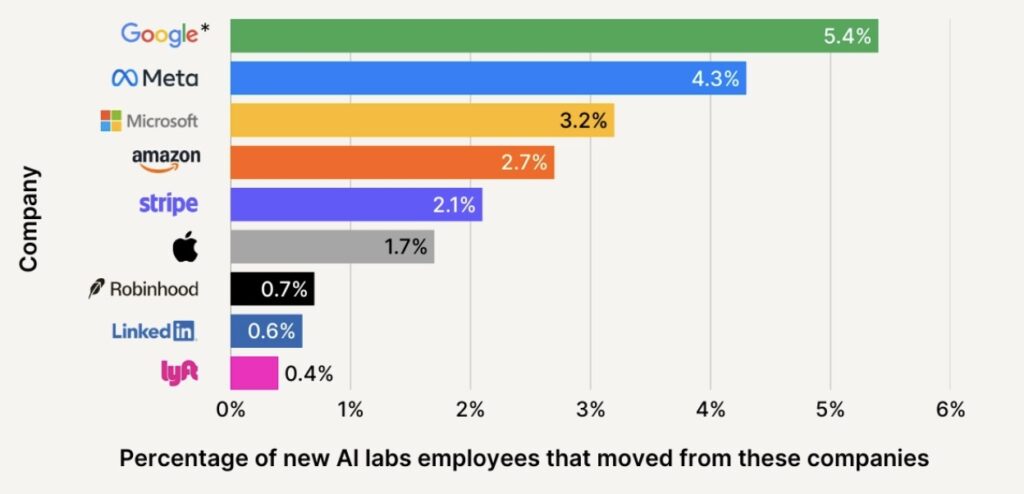Why Meta’s Massive Offers Can’t Keep Up with OpenAI and Anthropic’s Pull
- Meta is shelling out over$2 million per year for AI talent, yet still losing top minds to competitors like OpenAI and Anthropic, with recent reports highlighting at least three such cases in a single week.
- Anthropic leads the pack with an impressive 80% retention rate after two years, emerging as the top destination for elite AI researchers in 2025, according to the SignalFire State of Talent Report.
- The tech talent landscape is undergoing a seismic shift, with new grad hiring plummeting by 50% since pre-pandemic levels, geographic hubs evolving, and AI labs rewriting the rules of attraction and retention.

The tech industry in 2025 is a battlefield, and the prize isn’t just cutting-edge algorithms or shiny new products—it’s the people who build them. Meta, one of the giants of Big Tech, is offering staggering compensation packages exceeding$2 million annually to secure top AI talent, yet even that isn’t enough. Just this week, whispers of at least three high-profile defections to rivals like OpenAI and Anthropic have surfaced, underscoring a brutal reality: the AI talent wars are absolutely ridiculous, and no amount of money guarantees loyalty. Drawing from the latest insights in the SignalFire State of Talent Report for 2025, this article dives into the chaos of tech’s talent gap, from the collapse of new grad hiring to Anthropic’s dominance in retention and the shifting geographic power centers of innovation.
Let’s start with the big picture. Over the past few years, companies have torn up the old playbook for hiring AI and tech talent, adapting to a landscape of fierce competition and rapid transformation. SignalFire’s Beacon AI platform, which tracks over 650 million professionals and 80 million organizations, offers a front-row seat to these shifts. Their data reveals a stark story: entry-level hiring is collapsing, a generational divide is leaving new graduates stranded, elite AI labs are not just attracting but retaining top talent, and the geographic hubs of tech are in flux. Beyond the headlines of layoffs and remote work debates, this is about a fundamental reset in how, where, and who companies hire to shape the future of technology.

The hardest hit in this reset? New graduates. Once, tech was the land of opportunity for fresh-faced college grads, with Big Tech and startups alike eager to scoop up the next big innovator. Now, that door is barely ajar. Hiring of new grads at Big Tech has dropped to just 7% of total hires, down 25% from 2023 and a staggering 50% from pre-pandemic levels in 2019. Startups aren’t much better, with new grads making up under 6% of hires, down 11% from last year and over 30% from 2019. The reasons are multifaceted: tighter budgets, smaller funding rounds, fewer new grad programs, and the rise of AI automating entry-level tasks. The Federal Reserve Bank of New York notes a 30% rise in unemployment for new college grads since September 2022, compared to an 18% rise for all workers. Employers aren’t helping—55% say Gen Z struggles with teamwork, and 37% of managers would rather use AI than hire a Gen Z employee. Even top computer science grads from elite schools are finding doors closed, with the share of new hires at the Magnificent Seven (Alphabet, Amazon, Apple, Meta, Microsoft, NVIDIA, and Tesla) dropping by more than half since 2022.
This isn’t just a slowdown; it’s a shift in what companies value. The “experience paradox” is real—employers want proof over potential, leaving grads in a Catch-22 where they need experience to get a job but can’t get a job without experience. Leaner teams and tighter budgets mean less investment in training, and many junior roles are now filled by senior individual contributors. While AI often takes the blame for displacing junior roles, the reality is more complex. The end of low-interest-rate-fueled “free money madness” from 2020-2022, coupled with overhiring and inflation, has forced companies to hire leaner. Carta data shows Series A startups are 20% smaller than in 2020. As AI tools handle routine tasks, the focus shifts to high-leverage technical roles like machine learning and data engineering, while non-technical areas like recruiting and sales shrink, making it even tougher for early-career talent to break in.

Amidst this chaos for new grads, the elite AI labs are playing a different game—and winning. Since the launch of ChatGPT in November 2022, the AI talent race has been in overdrive, and Anthropic has emerged as the frontrunner. With an 80% retention rate after two years, they outpace DeepMind at 78% and OpenAI at 67%, the latter of which matches Meta’s 64% but still lags behind. Anthropic isn’t just keeping talent; they’re aggressively poaching it, with engineers eight times more likely to leave OpenAI for Anthropic than vice versa, and an 11:1 ratio from DeepMind. Their secret sauce isn’t just money—it’s culture. Unlike Big Tech’s reliance on hefty paychecks and brand prestige, Anthropic offers autonomy, intellectual discourse, and flexible work without title politics or forced management tracks. Add to that the growing developer affinity for their product, Claude, and it’s no wonder they’re a magnet for talent stifled by bureaucracy elsewhere. Even Big Tech giants like Google, Meta, Microsoft, Amazon, and Stripe are losing senior researchers to Anthropic’s pull.
Geographically, the tech talent map is also shifting. San Francisco and New York City remain dominant, housing over 65% of AI engineers despite rising costs and remote work trends. But new hubs are rising fast—Miami’s tax perks and lifestyle have driven a 12% jump in AI roles, while San Diego saw a 7% rise in Big Tech positions and raised$5.7 billion in venture capital in 2024, even as startups there lost workforce share. Meanwhile, once-hot Texas cities like Austin and Houston are cooling off, with startup headcount drops of 6% and 10.9%, respectively, due to infrastructure lags, cultural mismatches, and a renewed focus on hybrid work models favoring proximity to traditional hubs.

Looking back at 2024 and ahead to 2025, some trends held while others surprised. Fractional roles for executives like CMOs and CTOs thrived, cybersecurity demand surged with AI-powered threats, and remote work evolved into hybrid models rather than dying out. For 2025, expect the rise of generalist engineers who can adapt quickly with tools like Copilot, a boom in equity advisors for lean startups, and new roles like AI governance leads and ethics specialists emerging alongside automation. The lesson of the past year is clear: technology doesn’t build the future alone—people do. For new grads, the path forward means leaning into bootcamps, open-source projects, and debugging AI flaws as a superpower. For employers, skipping junior hires risks breaking the long-term talent pipeline.
In the end, the AI talent wars—exemplified by Meta’s$2 million offers and Anthropic’s 80% retention—show that the real competitive edge lies in how you hire, grow, and keep great minds. As 2025 unfolds, the question isn’t just who can pay the most, but who can build a culture and vision that talent won’t walk away from, no matter the price tag. So, what’s your take on this talent tug-of-war? Have you seen similar shifts in your own industry or network?
